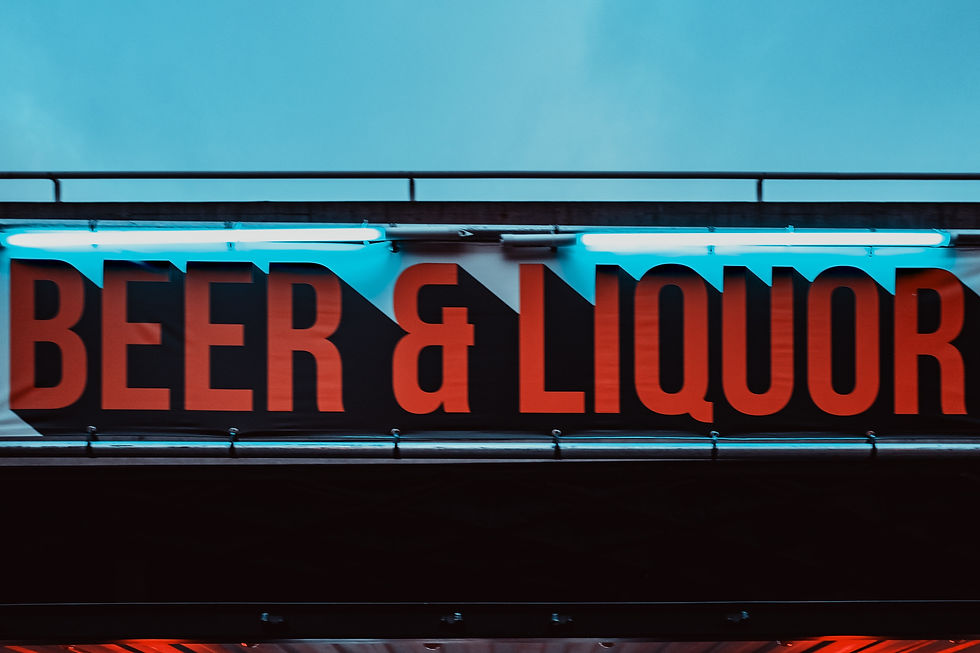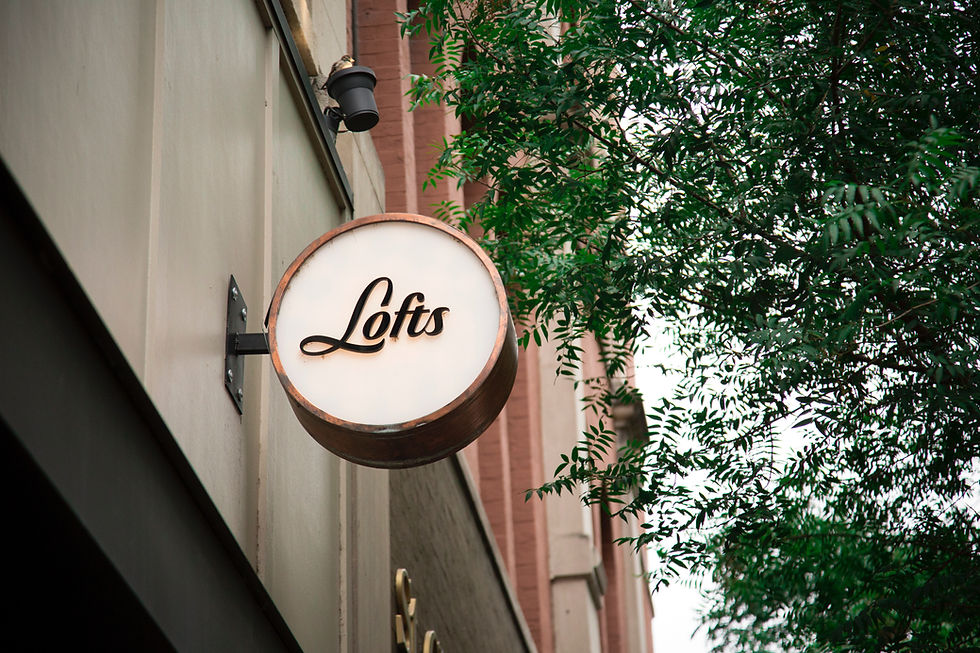Signage for Shop Front: Essential Tips for Effective Storefront Displays
- The Sign Company UK

- May 25
- 6 min read
Updated: Jul 8
Signage for shop front makes a business stand out and helps customers find what they need. The right shop front sign can catch someone’s attention, share important information, and make the shop look attractive. Shops can choose from many types of signage, from simple painted signs to bright LED displays. The best option depends on the business, location, and style. Careful planning ensures signs are easy to read and follow local rules. Working with a trusted
shop signage provider can help ensure your signage is effective, durable, and compliant with local standards.
Key Takeaways
Shop front signage is important for attracting customers. There are several signage types and design factors to consider. Proper installation and compliance with regulations matter.
Types of Shop Front Signage
Different types of shop front signage can help attract customers, build brand awareness, and make shops stand out on a busy high street. Each signage type serves a unique purpose, and the choice depends on visibility, style, and the message the shop wants to deliver. Working with a professional shop signage company helps businesses choose signage that matches their goals and location.
Illuminated Signs
Illuminated signs use built-in lighting to make shops noticeable in both daylight and at night. These signs are often made with LED lights due to their energy efficiency and bright colours.
This type of signage is highly visible in poor weather or after dark. Light boxes, backlit panels, and halo-lit letters are common styles.
Many businesses choose illuminated signs for their clarity and professional look. They are suitable for shops that need to be visible for long hours or in crowded areas.
Careful maintenance is required to keep these signs free from dirt and fully functional. The initial cost is higher than non-lit signs, but they often bring in more foot traffic due to better visibility. A reliable shop signage company can assist with design, installation, and upkeep.

3D Lettering
3D lettering gives a sign depth and dimension, making shop names and logos stand out from flat surfaces. These signs are made from materials like acrylic, metal, or plastic. Raised letters create shadows and highlights, providing extra visibility throughout the day as sunlight shifts.
This signage type also offers several design options. Shops can choose from different fonts, colours, and finishes such as gloss, matte, or metallic. The letters can be mounted directly onto the wall or attached to a backing board. 3D lettering is often picked by shops that want a high-end, modern look. It is also durable and withstands changes in weather, making it suitable for both indoor and outdoor locations.
Window Graphics
Window graphics use the glass areas at the front of shops to show logos, promotions, or decorative designs. These graphics can cover part or all of the window. They are usually printed on vinyl and applied directly to the glass. Clear, frosted, or opaque finishes are available.
Shops often use window graphics to share opening hours, sales events, or branding messages. Removable versions make it easy to update information with seasonal offers or changes. Window graphics also offer privacy for staff and stock areas, while letting natural light in. This affordable signage method requires little maintenance and is quick to install or remove.
Design Considerations for Shop Fronts
Good shop front signage communicates the shop’s purpose, attracts attention, and creates a strong first impression. Key factors include clarity, brand fit, and the right material selection. A skilled shop signage company can help translate a brand’s identity into visuals that work on the street.
Branding and Visual Identity
Signage needs to strengthen the shop’s brand identity. A distinct and consistent look helps shoppers remember the business. Shops should use their logo and other brand elements, like a tagline or icon. Placing these elements in visible positions makes the shop easier to identify.
The sign’s style must fit with the shop’s overall atmosphere, whether modern, classic, or playful. A mismatch between sign and shop can confuse customers and weaken the brand message. Consistency should extend to signage across entrances, windows, and any secondary signs. Using familiar symbols or images that relate to what the shop sells can also support quick recognition.
Choosing Colours and Fonts
Colour and typography choices are crucial for shop front signs. Colours should fit the brand palette while standing out from nearby shops. High contrast, such as light text on a dark background, helps people read signs from a distance.
Brand Style | Common Colours | Visibility |
Modern | Black, white, grey | High, clean |
Playful | Red, yellow, blue | Eye-catching |
Luxury | Gold, navy, silver | Sophisticated |
Simple fonts with good spacing work best outdoors. Fancy or overly decorative fonts are harder to read when walking or driving past. Text should be large enough to be seen from the street but not so big that it looks unprofessional.

Material Selection
Materials affect both the look and durability of the sign. Common materials include acrylic, aluminium, wood, and vinyl. Shop owners should consider the local weather when choosing. For example, acrylic and aluminium resist rain and sunlight better than wood.
Wood can give a rustic or traditional appearance, but it may need more upkeep. Vinyl decals are suitable for windows or temporary signs, but they may fade faster. Careful material selection affects not just maintenance, but also how people perceive the business. A high-quality sign suggests a high-quality shop, while worn or cheap-looking materials can create negative impressions. Partnering with a shop signage company ensures you're choosing materials that match your climate and your brand.
Installation and Compliance
Installing shopfront signage requires attention to regulations and should be handled by skilled professionals. Both planning permission and quality installation are key for long-term results and legal operation.
Legal Requirements and Planning Permission
Shop owners must follow local council rules about outside signage. Most councils require planning permission for signs placed on shopfronts, especially in conservation areas or for listed buildings. Failing to get permission can lead to fines or having to remove the signage.
Some councils set rules about sign size, lighting, placement, and materials. They may also have guidelines to keep the appearance of the area consistent. Permission is normally needed for illuminated signs and projecting signs.
Checklist for compliance:
Consult the local council website or planning office.
Prepare plans showing the sign design and position.
Allow time for approval and any required adjustments.
Public safety is also important. Signs must not block pavements, entrances, or roads, and should be securely mounted to avoid accidents. A knowledgeable shop signage provider can help with local compliance from start to finish.
Professional Installation
Professional installation ensures that shopfront signs are safe, secure, and made to last. Qualified installers use proper fittings and check that signs are level and well supported. Poor installation increases the risk of damage or injury.
Many professional sign installers follow British safety standards and offer maintenance services. They can advise on materials, placement, and installation methods best for the shop’s location.
A reputable installer will:
Assess the wall or shopfront for compatibility.
Use correct fixings for different materials like brick, glass, or metal.
Test electrical parts for illuminated signs before finishing the job.
Professional help also means quick repairs and upkeep, so business owners can focus on their work without worrying about signage problems. Working with a trusted sign company ensures all technical and safety details are managed properly.

Frequently Asked Questions
What factors determine the cost of a shop front sign?
The price depends on the size, materials, complexity of the design, and installation needs. Signs with lights or 3D elements generally cost more than flat or printed signs. Location and local planning rules can also affect costs.
What are some innovative ideas for shop front signage?
Businesses use digital LED signs, artistic murals, and window graphics to catch the eye. Some shops add interactive QR codes or use unique shapes and layered materials. Neon lighting is seeing a comeback in modern shop front designs.
Which materials are commonly used for outdoor shop signs?
Adding shop sign lights outdoor can also enhance visibility and nighttime presence. Acrylic, aluminium, wood, and PVC foam board are common choices. Each material offers different looks and durability. Metal is often chosen for a modern, durable finish, while wood gives a traditional appearance.
How can business owners effectively design their shop front signs online?
Many websites offer easy-to-use design tools where users can see previews as they create their signs. Templates help guide the layout, and some services provide professional design advice. It is important to use high-resolution images and logos for clarity. Using a reliable shop sign creator can simplify the process for small businesses and startups.
What content should be included on a shop sign to attract customers?
Shop signs should clearly display the business name and logo. Including contact details like a phone number or website is helpful. Short taglines or mention of specialities can make the sign more appealing.
What are economical options for small business shop front signage?
Vinyl banners, printed PVC signs, and simple painted boards are low-cost choices. Some owners use window decals or chalkboard signs for flexibility and savings. DIY assembly can also help lower installation costs.




Comments